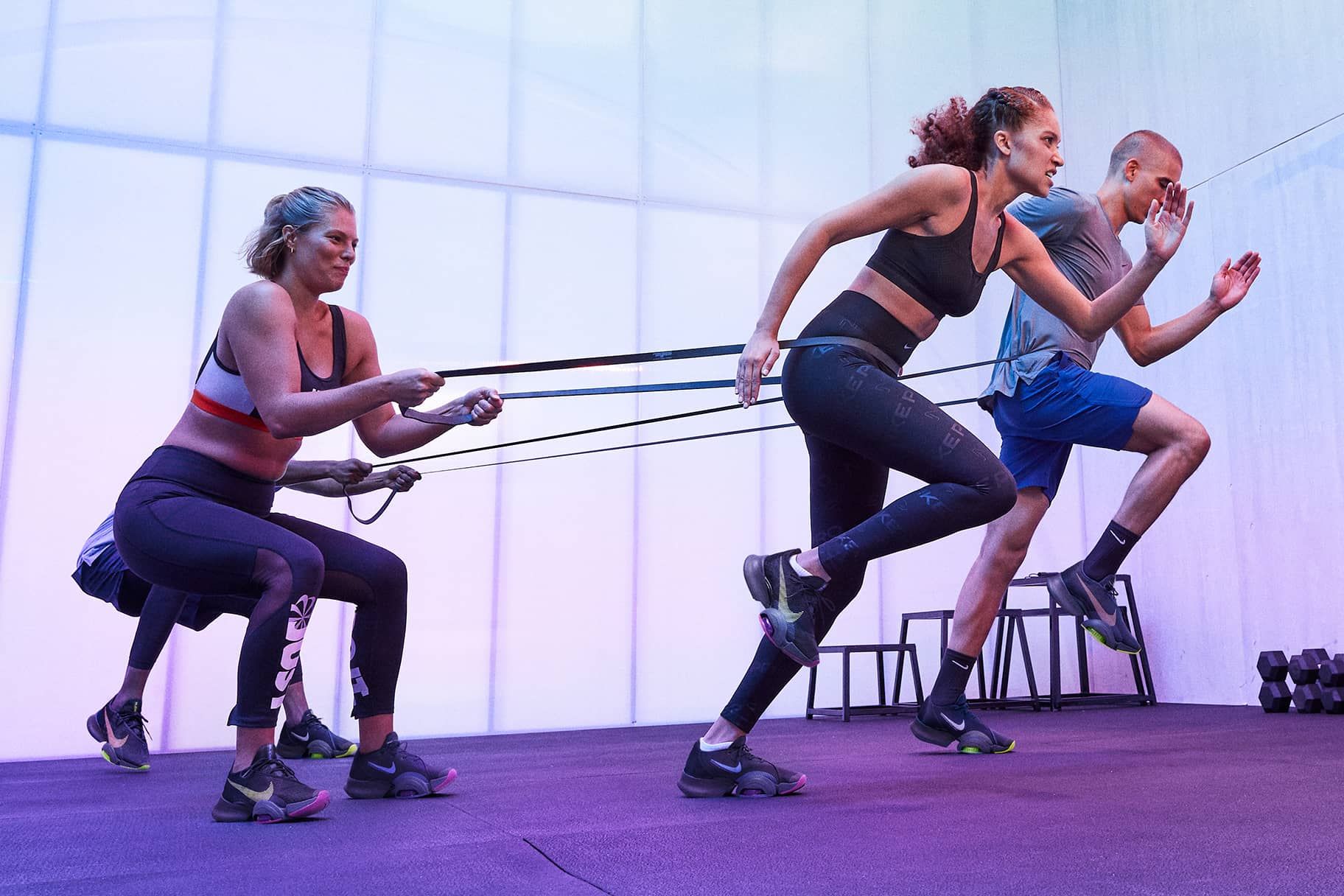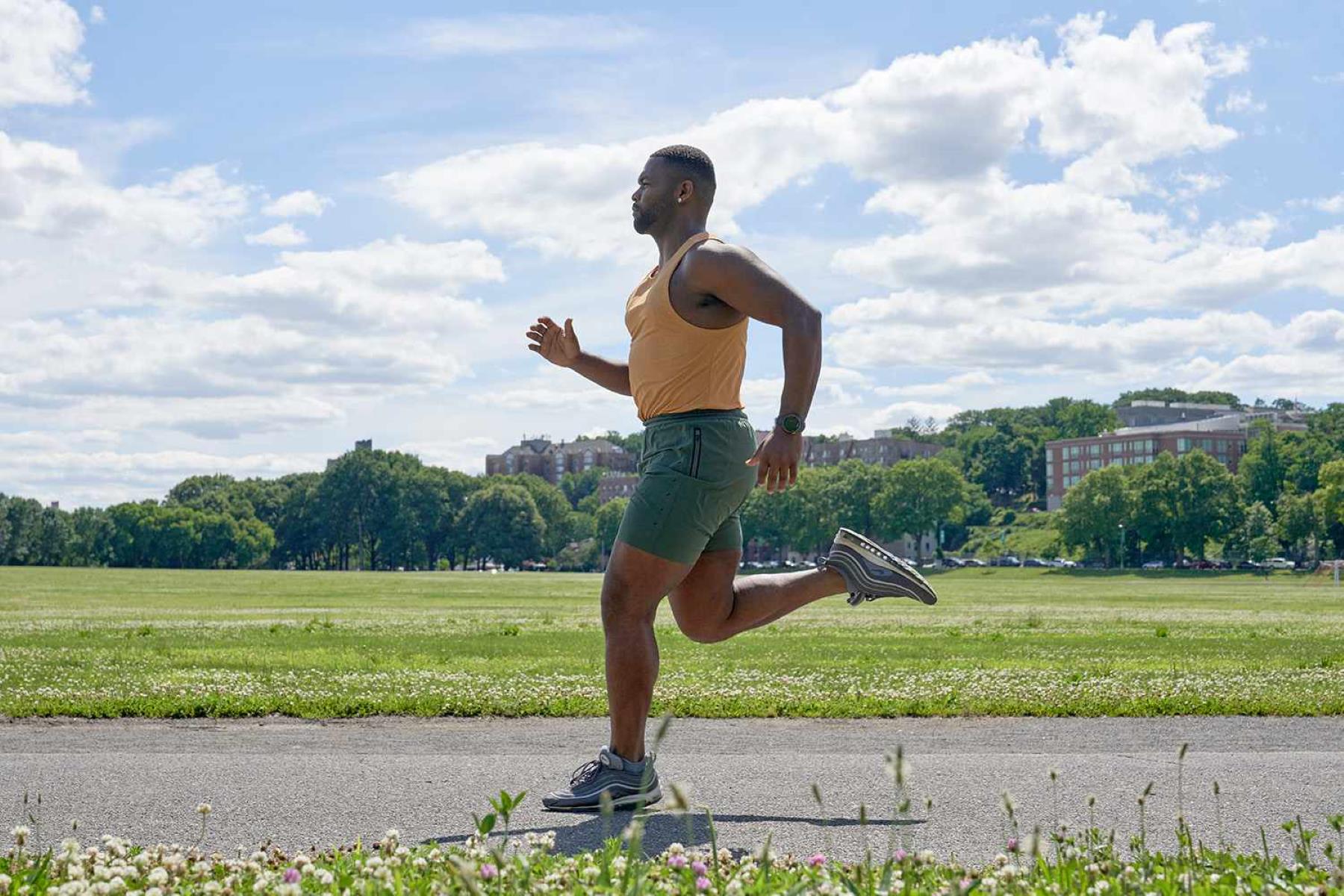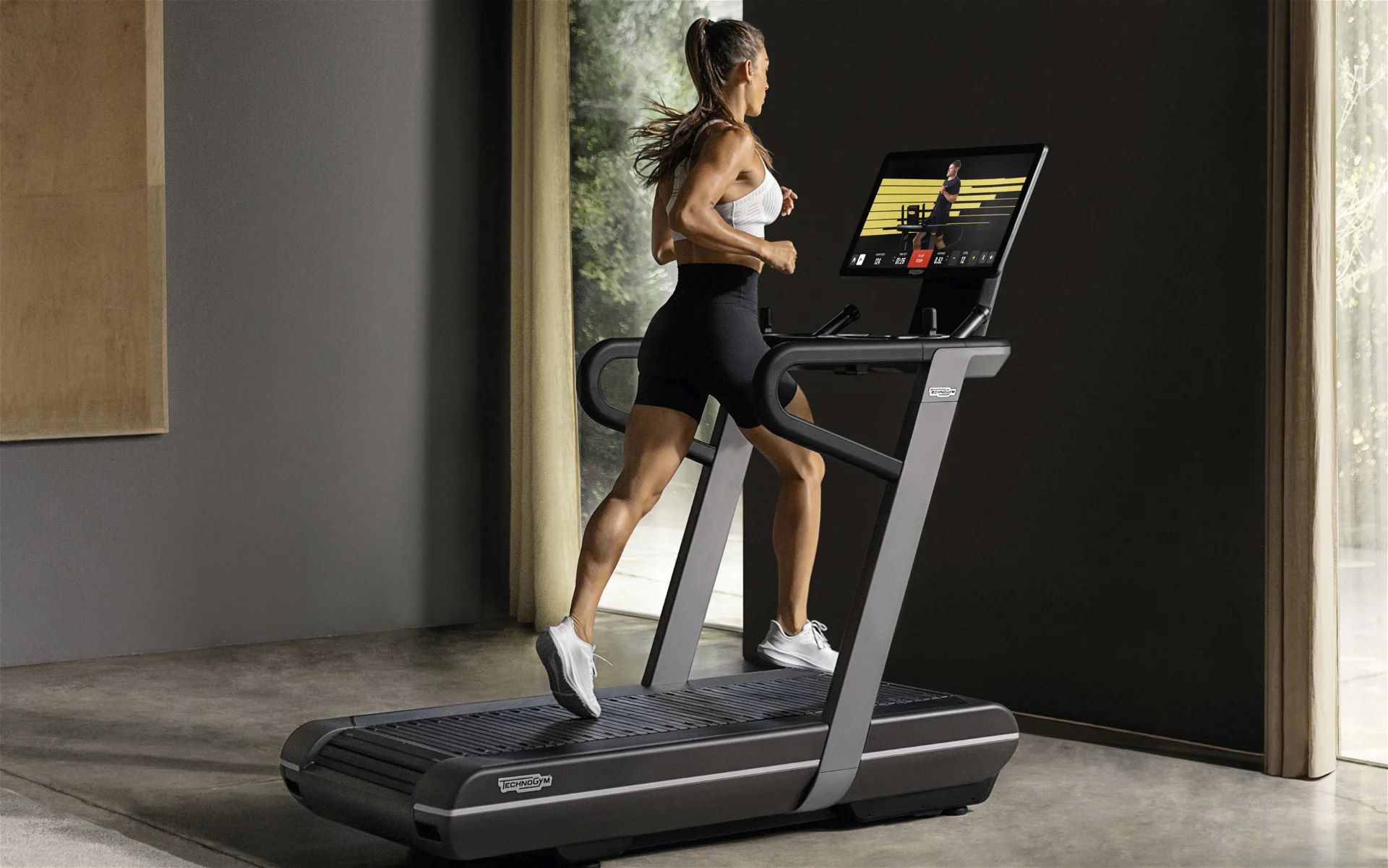

Featured
How To Properly Sprint
Modified: January 22, 2024
Learn how to properly sprint with our featured guide, packed with tips and techniques for maximum speed and efficiency.
Introduction
Sprinting is not just a common exercise; it is one of the most effective and efficient ways to improve your cardiovascular fitness, burn calories, and build strength. It is a form of high-intensity interval training that involves running or moving at your maximum speed for short bursts of time.
Sprinting offers numerous benefits that go beyond just getting your heart rate up. It can help increase your explosive power, improve your acceleration and speed, and even enhance your overall athletic performance. Additionally, sprinting can be a great stress reliever, as the intense physical activity releases endorphins that boost your mood and reduce anxiety.
Whether you are an elite athlete looking to gain a competitive edge or a beginner trying to improve your fitness level, sprinting can be a valuable addition to your exercise routine. However, to maximize the benefits and minimize the risk of injury, it is crucial to approach sprinting with the proper technique and preparation.
In this article, we will explore the various aspects of proper sprinting technique and provide tips on how to integrate sprinting into your fitness routine effectively. We will also discuss common mistakes to avoid and suggest warm-up and cool-down exercises to keep your body in top condition.
So, if you are ready to take your cardiovascular fitness to the next level and experience the exhilaration of sprinting, let’s dive into the world of proper sprinting technique and training!
Benefits of Sprinting
Sprinting offers a wide range of benefits that make it an excellent exercise choice for individuals of all fitness levels. Here are some of the key advantages:
- Cardiovascular fitness: Sprinting is a highly effective form of cardiovascular exercise that elevates your heart rate and improves oxygen uptake. By regularly engaging in sprinting workouts, you can strengthen your heart and lungs, enhancing overall cardiovascular health.
- Weight loss: Sprinting is a highly efficient way to burn calories and shed excess weight. The intense nature of sprinting stimulates the body’s metabolism, resulting in increased fat burning during and after the workout. By incorporating sprinting into your fitness routine, you can accelerate your weight loss efforts.
- Muscle development: Sprinting engages multiple muscle groups in your body, including the glutes, hamstrings, quadriceps, calves, and core. Regular sprinting can help build lean muscle mass and improve muscle tone, contributing to a more sculpted and defined physique.
- Improved athleticism: Sprinting helps improve your speed, power, and agility, making you a better athlete in various sports and physical activities. Whether you participate in team sports or simply enjoy recreational activities, sprinting can enhance your performance and give you a competitive edge.
- Increased bone density: Sprinting is a weight-bearing exercise that puts stress on your bones. This stress stimulates the bone remodeling process and promotes the development of stronger and denser bones. Incorporating sprinting into your routine can be especially beneficial for individuals at risk of osteoporosis or those looking to maintain optimal bone health.
- Stress relief: Engaging in intense physical activity like sprinting releases endorphins, which are natural mood boosters. These endorphins help reduce stress, anxiety, and even symptoms of depression. Sprinting can also provide a sense of accomplishment and make you feel more energized and focused throughout the day.
These are just a few of the many benefits that sprinting offers. Whether you are looking to improve your overall fitness, lose weight, build muscle, or enhance your athletic performance, sprinting is an excellent exercise option that can help you reach your goals.
Preparing for Sprinting
Before you dive into a sprinting workout, it is essential to properly prepare your body to minimize the risk of injury and optimize your performance. Here are some key steps to follow when preparing for sprinting:
- Warm-up: Begin your sprinting session with a dynamic warm-up to get your muscles and joints ready for the intense activity. Incorporate exercises such as high knees, butt kicks, leg swings, and hip rotations to increase blood flow, improve flexibility, and activate the muscles you will be using during sprinting.
- Stretching: After your warm-up, perform dynamic stretches to further loosen up your muscles. Focus on stretching your quadriceps, hamstrings, calves, and hip flexors. Perform exercises like walking lunges, leg swings, and calf stretches to improve your range of motion and prevent muscle strain.
- Proper footwear: Choose the right footwear for sprinting to provide adequate support and cushioning. Opt for lightweight running shoes with good traction and proper arch support. Make sure your shoes fit properly to avoid blisters or discomfort during your sprinting session.
- Gradual progression: If you are new to sprinting or have been inactive for a while, begin with shorter sprints and gradually increase the intensity and duration over time. This allows your body to adapt to the demands of sprinting and reduces the risk of overexertion or injury.
- Hydration: Proper hydration is crucial to optimize your sprinting performance and prevent dehydration. Drink water before, during, and after your sprinting session to ensure your body remains adequately hydrated. Avoid excessive caffeine or sugary drinks, as these can lead to dehydration and affect your performance.
- Correct form: Pay attention to your sprinting form to maximize efficiency and minimize the risk of injury. Keep your body upright, eyes focused ahead, and arms pumping in a controlled motion. Land on the balls of your feet and maintain a quick, powerful stride.
By following these preparation steps, you can minimize the risk of injury and set yourself up for a successful sprinting session. Proper preparation not only enhances your performance but also allows you to enjoy the benefits of sprinting to the fullest.
Proper Sprinting Technique
Mastering the proper sprinting technique is crucial to maximize your speed, efficiency, and reduce the risk of injury. Here are some key elements of proper sprinting technique:
- Starting position: Begin in a low crouch position with one foot in front of the other at the starting line. Keep your head and chest up, and your hands placed shoulder-width apart on the ground.
- Powerful drive phase: Explode out of the starting position by driving your lead leg forward and pushing off forcefully with your back foot. Keep your arms driving in a synchronized motion to generate maximum power.
- Stride length and frequency: Strive for long, powerful strides while maintaining a high turnover rate. Your strides should be quick and efficient, propelling you forward with each step. Avoid overstriding, as this can lead to decreased speed and increased risk of injury.
- Posture and body alignment: Maintain good posture and alignment throughout the sprint. Keep your body upright, with your shoulders relaxed and your arms pumping in sync with your legs. Avoid hunching over or leaning too far forward, as this can affect your speed and efficiency.
- Arm action: Proper arm action is essential for sprinting. Keep your arms at a 90-degree angle and drive them in a forward and backward motion, generating momentum and power. Avoid crossing your arms over your body or allowing them to swing outward excessively.
- Breathing: Focus on rhythmic breathing to maximize oxygen intake and maintain a steady pace. Breathe deeply and rhythmically, ensuring a continuous flow of oxygen to your muscles.
- Relaxation and fluidity: Stay relaxed and maintain a fluid running motion. Tension in your muscles can hinder your speed and agility, so consciously relax your muscles, particularly your shoulders, and allow your body to move with ease.
It is important to note that mastering the proper sprinting technique takes time and practice. Whether you are a beginner or an experienced athlete, focus on gradually improving each element of your technique to enhance your sprinting performance.
Common Mistakes to Avoid
While sprinting can be a highly effective exercise, there are common mistakes that individuals often make. By being aware of these pitfalls, you can avoid them and optimize your sprinting experience. Here are some common mistakes to avoid:
- Poor warm-up: Neglecting a proper warm-up can lead to muscle strain or injury. Always take the time to properly warm up your muscles and prepare your body for the demands of sprinting.
- Starting too fast: One of the most common mistakes in sprinting is starting with too high of an intensity. Gradually build up your speed and power instead of going all out from the beginning. This will help prevent fatigue and improve your overall performance.
- Overstriding: Overstriding occurs when you take strides that are too long. This can lead to decreased speed and increased risk of injury to the hamstrings. Focus on maintaining a quick turnover rate and taking powerful yet controlled strides.
- Inconsistent arm movement: Your arms play a significant role in sprinting. Avoid allowing your arms to cross over your body or swing too wide. Instead, maintain a proper arm motion and synchronization with your leg movements.
- Lack of core stability: A weak core can lead to poor posture and ineffective sprinting technique. Engage your core muscles to maintain a stable and upright body position throughout your sprint.
- Ignoring recovery: Allowing your body proper recovery time is essential. Avoid over-training and listen to your body’s signals. Incorporate rest days and recovery techniques such as stretching and foam rolling to prevent fatigue and potential injuries.
- Improper cool-down: Neglecting to cool down after sprinting can lead to muscle tightness and soreness. Make sure to include a cooldown phase that involves light jogging or walking, followed by static stretches to lengthen and loosen your muscles.
Being aware of these common mistakes and taking proactive steps to avoid them will help you get the most out of your sprinting workouts and reduce the risk of injury. Practice proper form and listen to your body to ensure a safe and effective sprinting session.
Warm-up and Cool-down Exercises
Proper warm-up and cool-down exercises are essential components of any sprinting routine. They help prepare your body for intense activity, prevent injuries, and promote recovery. Here are some warm-up and cool-down exercises to incorporate into your sprinting workouts:
- Dynamic Warm-up: Start your warm-up with dynamic exercises that target the major muscle groups involved in sprinting. Perform exercises like high knees, butt kicks, leg swings, and walking lunges. These exercises increase blood flow, improve flexibility, and activate the muscles you will be using during sprinting.
- Active Stretching: After your dynamic warm-up, move on to active stretching exercises that mimic the movements of sprinting. Perform exercises like walking lunges with a twist, standing leg swings, and ankle circles to further loosen up your muscles and improve your range of motion.
- Strides: Strides are short bursts of running at about 70-80% of your maximum speed. Use strides to gradually increase your momentum and prime your body for the upcoming sprinting workout. Start with a few shorter strides and gradually increase the distance and intensity.
- Cool-down Jog: After your sprinting session, include a cooldown jog to gradually bring your heart rate down and allow your body to return to a resting state. This gentle jog helps flush out metabolic waste products from your muscles and aids in the recovery process.
- Static Stretching: Finish your workout with static stretches to lengthen and relax your muscles. Focus on stretching your quadriceps, hamstrings, calves, hip flexors, and glutes. Hold each stretch for about 20-30 seconds and breathe deeply to enhance the stretching effect.
- Foam Rolling: Consider incorporating foam rolling into your post-workout routine. Foam rolling helps release muscle tension and knots, promoting faster recovery and reducing muscle stiffness. Focus on areas like your calves, hamstrings, quadriceps, and glutes.
Remember, your warm-up and cool-down exercises should be specific to sprinting and target the muscles and movements involved. By dedicating time to warm-up properly and cool down after your sprinting session, you can enhance your performance, prevent injuries, and promote muscle recovery.
Incorporating Sprinting into Your Fitness Routine
Sprinting can be a valuable addition to your fitness routine, whether you are a beginner or an experienced athlete. Here are some tips on how to effectively incorporate sprinting into your fitness regimen:
- Start slowly: If you are new to sprinting, start with shorter sprints and gradually increase the distance and intensity as your fitness level improves. This will allow your body to adapt and minimize the risk of injury.
- Interval training: Incorporate sprint intervals into your cardiovascular workouts. Alternate between periods of high-intensity sprinting and active rest or recovery periods. This form of high-intensity interval training (HIIT) is an efficient way to improve cardiovascular fitness and burn calories.
- Mix it up: Vary your sprinting workouts to challenge your body and avoid plateaus. Try different types of sprints, such as uphill sprints, interval sprints, or partner sprints. You can also incorporate sprinting into other exercises, such as circuit training or outdoor HIIT workouts.
- Frequency: Aim to incorporate sprinting into your routine 1-2 times per week. This allows for adequate recovery and avoids overexertion. You can adjust the frequency based on your fitness goals and individual needs.
- Combine with strength training: Pair sprinting with strength training exercises to create a well-rounded workout routine. By incorporating compound movements like squats, lunges, and push-ups, you can improve your overall strength and power, complementing the benefits of sprinting.
- Listen to your body: Pay attention to how your body responds to sprinting. If you experience excessive fatigue, soreness, or pain, take additional rest days or modify your sprinting intensity. It’s important to find the right balance between challenging yourself and allowing your body proper recovery.
- Track progress: Monitor your sprinting progress by keeping a record of your times, distances, and perceived effort. This will allow you to track improvements and set new goals for yourself. Celebrate your accomplishments and use them as motivation to keep pushing forward.
Remember, sprinting is a high-intensity exercise, so it’s important to listen to your body and gradually build up your endurance and strength. With consistency and patience, you can enjoy the numerous benefits that sprinting brings to your overall fitness and performance.
Conclusion
Sprinting is a powerful exercise that offers a multitude of benefits for individuals of all fitness levels. From improving cardiovascular fitness and burning calories to enhancing athleticism and boosting mood, sprinting is a versatile and effective training method.
By following proper sprinting technique, preparing your body with a warm-up, and incorporating cool-down exercises, you can optimize your sprinting performance and minimize the risk of injury. It is crucial to listen to your body, start slowly, and gradually increase intensity to avoid overexertion and allow for proper recovery.
Whether you choose to sprint as a stand-alone workout or incorporate it into your existing fitness routine, the key is consistency and progress. Track your performance, set goals, and celebrate your achievements along the way. With time and dedication, you will experience the physical and mental rewards that sprinting brings.
Remember, safety always comes first. If you have any underlying health conditions or concerns, consult with a healthcare professional before starting any new exercise program, including sprinting.
So, lace up your running shoes, hit the track, and feel the exhilaration of sprinting as you take your fitness journey to new heights!









